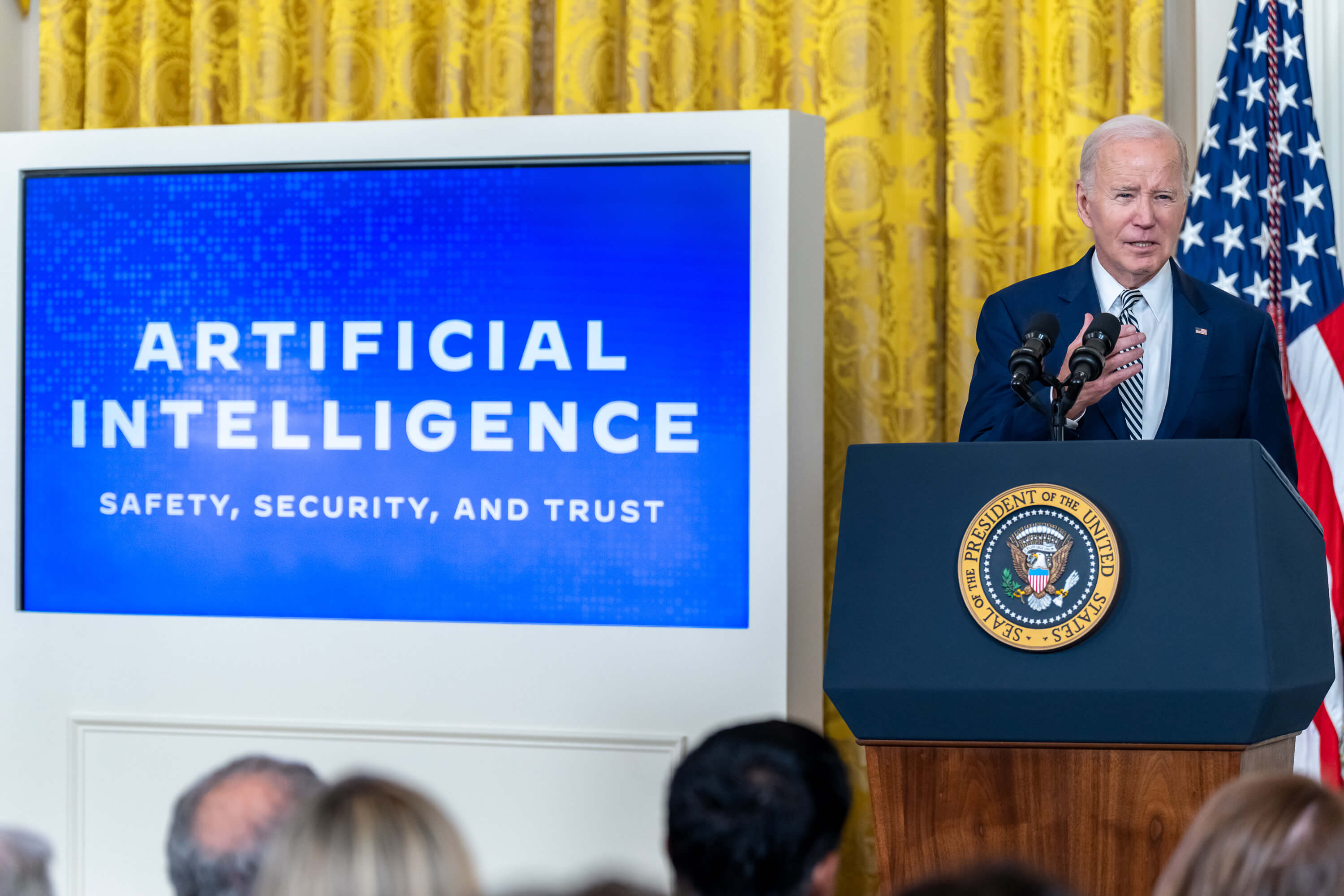Copyright Law Could Stop 3-D Printed Guns. Should It?
Cody Wilson’s legal battle to post his plastic gun schematic is awful, pitting speech values against human lives, raising the specter of more mass shootings, and casting a dark shadow on what should be the bright new technology of 3-D printing. In times like these, it's tempting to wish that a few magic words could make the schematic—and all its legal and moral baggage—simply disappear.

Published by The Lawfare Institute
in Cooperation With

Cody Wilson’s legal battle to post his plastic gun schematic is awful, pitting speech values against human lives, raising the specter of more mass shootings, and casting a dark shadow on what should be the bright new technology of 3-D printing. In times like these, it's tempting to wish that a few magic words could make the schematic—and all its legal and moral baggage—simply disappear.
It’s possible those magic words actually do exist, but as with most quick fixes, they may come with troubling and unforeseen consequences. Here, a novel application of copyright law could effectively overcome or at least dampen the First Amendment challenge. This is because prevailing case law has held privately-owned copyright interests to be something of an exception to the First Amendment. To invoke this novel theory, however, may establish copyright law as a tool for censorship beyond this context. There is a serious and ongoing danger in the tendency to deem copyright and other intellectual property rights as exceptions to national policy interests such as free speech, because of how broadly copyright issues can be applied today.
Taking Copyrights, Seriously
Cody Wilson and his organization Defense Distributed possess a schematic for a 3-D printed plastic gun that he planned to place on the internet, where it would be publicly available to anyone who might wish to build one. Originally, the federal government sought to stop him from doing so, asserting a federal arms export regulation; now that the federal government has settled with him, several states have launched new efforts to block distribution of the schematic.
Wilson argues that the schematic is essentially a written computer program and thus a form of speech, so the First Amendment prohibits government actors from stopping its distribution. He also raises a Second Amendment challenge, but the First Amendment issue is the focus here. Whether a computer program or technical schematic qualifies as protected speech under the First Amendment is an interesting and difficult legal question, and is one that has come up in the context of encryption algorithms and DVD ripping codes. Indeed, in a recent preliminary injunction decision in Wilson’s case, Judge Robert S. Lasnik identified over half a page of “challenging issues” under the First Amendment (which he ultimately declined to decide given the preliminary stage of the case).
But the federal government or a state or local government could avoid this thorny question by using copyright law as the mechanism to stop Wilson from distributing the schematic.
Like a computer program, the plastic gun schematic is a document file. As such, it automatically receives a copyright owned by the creator of the schematic, namely Wilson. Accordingly, under the Takings Clause of the Fifth Amendment, the federal, state, or local government could exercise eminent domain to take ownership of the copyright. Indeed, a fair number of legal scholars believe that copyrights are subject to the Takings Clause, and the Supreme Court has suggested a number of times that the clause applies to intellectual property. For example, in Ruckelshaus v. Monsanto, the court held that it applied to trade secrets; themselves a form of intellectual property.
To exercise eminent domain, a process known as condemnation, the government would first need to identify a relevant statute broad enough to authorize the taking (such as California’s statute, once deemed broad enough to authorize Oakland to condemn a football franchise). It would then file a lawsuit asking a court to condemn the copyright and thus transfer title to the government. An eminent domain action is necessary here because the government needs to fully divest Wilson of his copyright; a “regulatory taking” where the government only restricts the manner of use of the copyright would not suffice.
In compliance with the Takings Clause, the government would have to show that taking Wilson’s copyright serves a “public use.” Under Kelo v. City of New London, this merely requires that the taking serve a “public purpose,” for which courts have a “longstanding policy of deference to legislative judgments in this field.” The same test would likely be applied to intangible property—Monsanto, for example, similarly required a taking to have “a conceivable public character.” The government could likely argue successfully that the protection of the public from plastic guns satisfies this deferential standard. It would also have to pay “just compensation” to Wilson, which he could obtain in the Court of Federal Claims under the Tucker Act.
At this point, the government could retain ownership of the copyright to wield it against Wilson, but the government’s assertion of copyright to block content distribution might seem unbecoming and possibly a relevant distinction under the First Amendment. To avoid this, the government could instead reassign the copyright to a third party, say a hypothetical nonprofit “Citizens Against Printed Guns.” This nonprofit, once in possession of the copyright, could sue Wilson and his group to enjoin them from distributing the schematic, and take advantage of the many enforcement tools of copyright law to prevent that distribution. (It may seem odd for Wilson to be sued for infringing the schematic that he himself created, but in fact it is fairly common for authors to be sued over their own works after the copyright has been transferred.)
Notably, this makes copyright law an even stronger way of stopping distribution of the schematic than the arms export regulation that the federal government and states are asserting. As Judge Lasnik explained in his recent opinion, nothing in the regulation stops the schematic from being “emailed, mailed, securely transmitted, or otherwise published within the United States”—and not surprisingly, Wilson has now announced that he will sell copies by mail. Copyright law, however, would potentially stop all of those, since all of those acts would be acts of infringement.
Circumventing the First Amendment
Naturally, Wilson would object that this copyright/eminent domain scheme is no better under the First Amendment than a direct prohibition on his distribution of the schematic. Yet under a reasonable reading of prevailing case law, he may be wrong: Whether or not the government can stop distribution of the schematic directly, it likely can do so using copyright without violating the First Amendment.
This is because the Supreme Court has effectively held copyright law to be exceptional under the First Amendment. In two cases, Eldred v. Ashcroft and Golan v. Holder, petitioners challenged various enlargements of the copyright term as violations of the Free Speech Clause. The court found no violation for two reasons: First, because the constitutional provision that empowers Congress to grant copyrights was “adopted close in time” to the First Amendment itself, the court found that “copyright’s limited monopolies are compatible with free speech principles.” Second, it relied on two exceptions to copyright protection: that copyright does not protect pure ideas, just particular expression of them; and that a copyright is not infringed by certain so-called “fair uses,” namely those uses of others’ work that courts have deemed acceptable under a statutory test (some common examples of fair use being quotations for news reporting and parodic commentaries). These exceptions act as “built-in First Amendment accommodations,” in view of which there is “no call for the heightened review” that the First Amendment ordinarily demands. Indeed, in neither case did the court apply any First Amendment analysis at all, relying solely on the nature of copyright law to find such analysis unnecessary.
In particular, Golan involved a statute that revived copyright in works where the copyright had previously expired and thus fallen into the public domain. Lawrence Golan and other petitioners argued that Congress’s removal of those works from the public domain (a “taking” of sorts, as even the authors of the statute believed) violated the First Amendment. However, in the Supreme Court’s view, the petitioners’ ability to make fair use was sufficient to meet their free speech interests.
These broad principles suggest the means by which a copyright takings strategy in the gun schematic case may also avoid the First Amendment. Wilson may attack the nonprofit’s assertion of the copyright against him or its refusal to license the copyright back. In either situation, though, the nonprofit could argue that Wilson is free to talk about the pure ideas of 3-D printed guns and to quote small portions of the schematic. Wilson is merely prohibited, the nonprofit would say, from distributing the copyrighted expression of the schematic file itself.
More likely to succeed would be a First Amendment challenge to the government’s taking in the first place. But this strategy too would face serious difficulties. For one thing, the taking could be justified under the adverse secondary effects doctrine, which has also been used to overcome First Amendment challenges to takings of land held by adult entertainment businesses. More importantly, if taking a copyright impinged on speech, it would conflict with the Eldred–Golan framework because the taking divests Wilson of exactly the same interest of which copyright law in general divests the public. In the same way that Wilson would lose his ability to make non-fair-use distributions of the gun schematic, Lawrence Golan lost his ability to make non-fair-use distributions in those works in which Congress reinstituted copyright. If Golan’s loss under copyright law did not raise a First Amendment issue, then it is hard to see why Wilson’s analogous loss would.
Wilson’s best recourse, perhaps, is to argue that distributing the whole schematic constitutes fair use. The law of fair use is complicated at best and indeterminate at worst, but there is actually a good chance that he would ultimately succeed: At least one district court has held redistribution of copyrighted works of high political salience to be fair use. But reaching that point of success could take years of litigation, during which the government would be free to seek preliminary injunctions. In non-copyright contexts, preliminary injunctions are often considered “prior restraints of speech” (i.e., pre-publication censorship) that are disfavored by default, but preliminary injunctions are regularly granted in copyright cases, again highlighting how copyright acts as an exception to the First Amendment.
A Dangerous Game
The danger of this copyright-takings scheme may be apparent by now. As long as the appropriation of the copyright can meet the deferential “public purpose” test under Kelo, little prevents the government from using copyright as a general-purpose censorship tool. For example, a recruitment video for extremist terrorism could have its copyright appropriated for the public purpose of national security. But so could a domestic protest video, perhaps under the guise of public safety. In a more nefarious example, the government could deem unfavorable media “fake news” and seize the relevant copyrights in the name of avoiding “misinformation.” In all these examples, the government could make the same arguments as above: Speakers are free to talk about the ideas in the videos or media, and even free to quote them or make other fair uses; they merely may not use the exact expression.
It is obvious—at least to me—that the government should not do any of these things, whether through copyright or otherwise. However, that the law might be used this way suggests that there is an error in Eldred and Golan’s holdings that copyright’s scope of protection (which covers particular expression but not ideas or fair uses) is sufficiently narrow to avoid implicating the First Amendment. On the contrary, the gun schematic and other cases above suggest precisely that particular expression can be necessary to the exercise of free speech.
That copyright seems to avoid First Amendment concerns exemplifies an ongoing policy trend of cabining off intellectual property from other national interests. For example, the United States has generally (current administration notwithstanding) pursued free trade in most sectors, yet maintains an active protectionist institution—the International Trade Commission, a holdover of the Smoot–Hawley Tariff Act intended to favor domestic intellectual property holders over foreign companies. The federal government has also opposed foreign efforts to require data localization, but has made intellectual property the exception to that policy. Antitrust law has occasionally given special treatment to intellectual property; indeed there is a viable minority line of reasoning that intellectual property is an absolute “exception to the applicability of antitrust laws.” Online platforms that host content have until recently enjoyed broad immunity from all sorts of liability except intellectual property infringement (governed by separate legal rules), an exception that has resulted in attempts to twist torts or privacy violations into a copyright framework.
Policymakers adopt these exceptions to national norms and policies largely to promote copyright law’s core purpose of encouraging the creation of new, creative works by preventing piracy. But today, copyright law reaches into unexpected uses, far afield from that core purpose. Those unexpected uses may be arguably admirable, such as preventing revenge porn or protecting individual privacy. But other uses, such as the use of copyright to prevent political speech, are troubling. In a world where intellectual property touches everything from the mundane to the political, whether and when exceptions and special treatment are warranted become key fundamental questions for further consideration.





